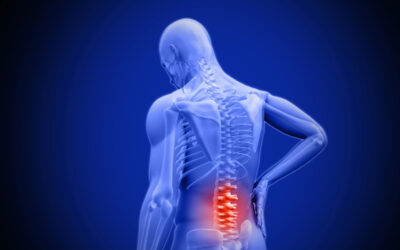
Introduction
Lower back pain is an extremely common condition, affecting up to 80% of adults at some point in their lifetime. It is one of the most frequent reasons that people miss work and a leading cause of disability worldwide. While most cases of back pain resolve on their own with rest and home remedies, chronic or recurring back pain can greatly reduce one’s quality of life.
The goal of this comprehensive guide is to help you understand the causes of lower back pain, recognize key symptoms, and discover the most effective treatments for relief, whether your pain is acute or chronic. With knowledge and preventative care, many cases of back pain can be avoided or successfully managed for a pain-free, active lifestyle.
Understanding Lower Back Pain
Lower back pain refers to soreness, tension, and discomfort in the region of your back extending from the bottom of the ribcage to the pelvis. This area is known as the lumbar region and contains the lumbar vertebrae and multiple muscles, ligaments, and nerves that support movement and stability.
The most common causes of lower back pain involve strain or injury to the muscles and ligaments that surround the lumbar spine. These soft tissues can be strained by improper lifting, sudden movements, poor posture, or simply overuse through daily activities. Back pain can also arise from problems with the lumbar vertebrae, spinal discs, spinal nerves, or other structures in the lower back.
Acute back pain is defined as pain that lasts less than 3 months, often resolving within a few days or weeks with conservative treatment. Chronic back pain refers to discomfort that persists for more than 3 months, and may come and go over long periods. Recurring acute episodes of back pain may eventually develop into a chronic condition.
The most common causes of lower back pain involve strain or injury to the muscles and ligaments that surround the lumbar spine. These soft tissues can be strained by improper lifting, sudden movements, poor posture, aging, or overuse through daily activities.
There are many factors that can contribute to low back pain, which makes finding the cause complex. However, the most frequent sources can be grouped into four main categories:
Mechanical Issues and Soft Tissue Injuries
The muscles and ligaments in the back serve to support proper spinal structure and enable a full range of motion. Strains to these soft tissues are very common sources of acute lower back pain.
Muscle strains and ligament sprains can occur suddenly during strenuous activity, or develop gradually from repetitive motions and poor posture over time. Even prolonged sitting or standing can overwork certain back muscles.
Herniated discs, bulging discs, and degenerative disc disease often result in back pain due to inflammation, muscle spasms, or compression of spinal nerves. Discs act as cushions between the vertebrae.
- Spinal stenosis, or narrowing of the spinal canal, puts pressure on the spinal cord and nerves in the lower back.
- Osteoarthritis in the spine also leads to degeneration of the bones, joints, and discs.
Skeletal Irregularities and Other Conditions
Scoliosis, or curvature of the spine, alters weight distribution and may cause asymmetric muscle strain leading to back pain. An uneven pelvic tilt can have similar effects.
Weakening of the bones from osteoporosis or fractures increases susceptibility to back pain especially with minor strain or injury.
Kidney stones, kidney infections, uterine disorders, and other problems in the abdomen can radiate pain to the lower back. Rarely, tumors affecting the spine may cause back pain.
Lifestyle and Environmental Factors
Improper lifting and bending when moving heavy objects is a major source of acute back injuries. Twisting while lifting exacerbates the strain.
Poor posture from slouching, leaning forward during computer work, crossing legs, or wearing improper footwear chronically strains back muscles.
- Obesity or excess weight places greater loads on the spine during movement and when standing or sitting, contributing to gradual wear and tear.
- Sedentary lifestyles reduce back strength and flexibility. Too little physical activity allows muscles to weaken and tighten.
Psychological and Emotional Factors
Chronic stress induces muscle tension which can intensify and prolong lower back pain episodes.
Depression, anxiety, anger, and other psychological factors are linked to increased pain sensitivity and somatic (body-related) symptoms.
- Smoking and sleep deprivation have also been associated with increased occurrence and severity of back pain.
Symptoms and Diagnosis
Recognizing the hallmark symptoms of lower back pain and when to seek medical care can help guide effective treatment. Diagnostic tests provide invaluable insights as well.
Recognizing Symptoms
Localized pain in the low back ranging from an ache to acute stabbing pain. Can be unilateral or bilateral. Often worsens with movement.
Muscle spasms and soreness in the lower back.
Radiating pain into the hips, buttocks, thighs, groin, or legs (sciatica). Numbness or tingling may occur.
Reduced flexibility and range of motion in the lower back. Moving or standing up straight is difficult.
Pain triggered by coughing, sneezing, laughing, or bowel movements.
When to See a Doctor
You should consult a physician if your back pain:
- Is severe, debilitating, or persists beyond 3 days
- Results from trauma or injury
- Spreads down one or both legs
- Is accompanied by “red flag” symptoms like unexplained weight loss, fever, abdominal pain, weakness/numbness, or bowel/bladder dysfunction. These may indicate serious spinal conditions requiring prompt medical care.
Diagnostic Tests
To correctly identify the cause of lower back pain, doctors utilize:
Medical history review and physical exam to assess symptoms and identify areas of tenderness.
Neurological tests to determine if nerves are affected. This includes reflex, sensation, motor function, and range of motion tests.
Imaging tests like X-rays, CT scans, and MRIs to visualize spinal structure, discs, vertebrae, soft tissues, and nerves.
Electromyography measures muscle and nerve activity in the back and legs.
Discography injects dye into discs to identify damage. Blood tests help rule out infections and other systemic causes.
Let me know if this revised structure and formatting looks good! I’m happy to make any other adjustments.
Relief and Management of Lower Back Pain
Relieving acute lower back pain often involves rest, ice/heat, medication, and gentle stretches. For chronic back problems, exercise, physical therapy, stress reduction, and sometimes surgery offer lasting relief.
Home Remedies and Self-Care
Apply cold packs for the first 2 days to reduce inflammation, followed by gentle heat packs which promote blood flow and healing.
Try over-the-counter non-steroidal anti-inflammatory drugs (NSAIDs) like ibuprofen to relieve pain and swelling. Talk to your doctor about prescription muscle relaxants for severe muscle spasms.
Get ample rest, but also perform gentle back stretches and take short walks to prevent stiffening up. Avoid activities that aggravate your pain. Slowly increase activity as pain improves.
Medical Treatments
If pain persists beyond 2 weeks, see your doctor. He/she may recommend physical therapy with massage, ultrasound, aquatic therapy and specific exercises tailored to your condition.
- Epidural steroid injections deliver anti-inflammatory corticosteroids near irritated nerves.
- Nerve block injections numb areas of back pain.
Spinal manipulation by chiropractors, osteopaths or other specialists can provide short-term relief in some cases of back pain.
As a last resort for serious back conditions, doctors may recommend surgery to repair herniated discs or spinal stenosis, fuse vertebrae, or stimulate nerves.
Alternative Therapies
Acupuncture uses fine needles placed in specific points along the back and legs to reduce pain. Scientific evidence is equivocal regarding its effectiveness.
Massage therapy performed by a licensed massage therapist can relax tense muscles, improve circulation, and boost endorphins to gently alleviate back pain.
Mindfulness, meditation, yoga, tai chi, and other mind-body practices help relieve stress and tension implicated in some back pain. Controlled breathing enhances relaxation.
Preventing Recurrence
Once your acute back pain subsides, embark on a regular core strengthening and flexibility exercise program to better support your back and prevent future injuries. This may include Pilates, yoga, swimming, or other low-impact activities recommended by your doctor or physical therapist.
- Use proper lifting techniques – bend your knees, tighten core muscles, avoid twisting, and carry loads close to your body at waist level.
- Maintain proper posture when sitting, standing and sleeping. Use ergonomic chairs and workstations.
Losing excess weight reduces stress on the lower back. Eat a nutritious diet and exercise portion control.
Let me know if you would like me to modify anything in this revised section.
Conclusion
We hope this guide provides you with a thorough understanding of the origins of lower back pain as well as the most effective remedies, both short-term and long-term. While acute flare-ups may resolve on their own, don’t hesitate to consult a doctor for any persistent or worsening pain. With proper self-care, medical treatment if necessary, a positive attitude, and healthy lifestyle adaptations, the vast majority of lower back pain sufferers can achieve meaningful pain reduction and resume daily activities. Just remember – you are not alone, and there are many solutions to restore your comfort and quality of life!
Contact a Spine Specialist Near You!
Related Articles
Lower Back Pain | An Overview
Lower back pain is an exceedingly common affliction that affects up to 80% of adults at some point in their lives. Understanding the underlying causes of lower back pain is key to finding the appropriate treatment and relief. Anatomy of the Lower Back The lower back,...
Degenerative Disc Disease | Causes and Risk Factors
Degenerative disc disease describes age-related wear and tear to the rubbery spinal discs cushioning the vertebrae that can lead to chronic back or neck pain. While partly genetic, there are also lifestyle factors and injuries that accelerate disc degeneration over...
Upper (Thoracic) Back Pain | What is Causing My Pain?
Upper back pain is a surprisingly common affliction, affecting up to one-quarter of the adult population at some point. While not as prevalent as lower back pain, discomfort in the thoracic region still accounts for a substantial slice of musculoskeletal complaints...
Stay Up to Date With The Latest News & Updates
Access Premium Content
Sed ut perspiciatis unde omnis iste natus error sit voluptatem accusantium doloremque
Join Our Newsletter
Sed ut perspiciatis unde omnis iste natus error sit voluptatem accusantium doloremque
Follow Us
Sed ut perspiciatis unde omnis iste natus error sit voluptatem accusantium doloremque



